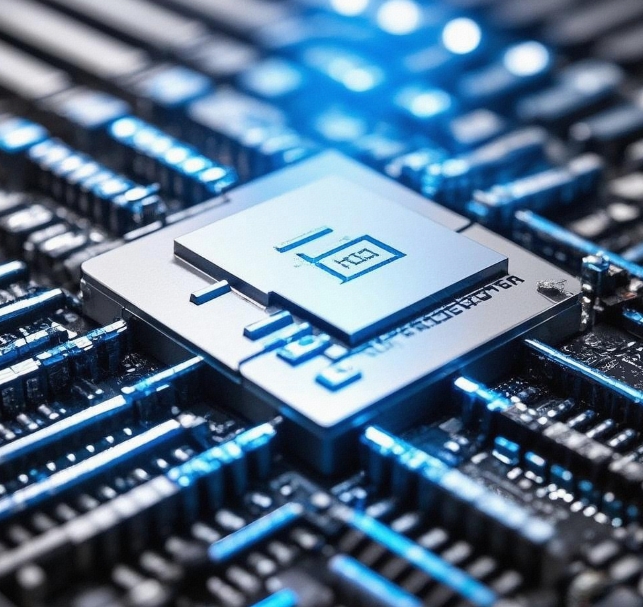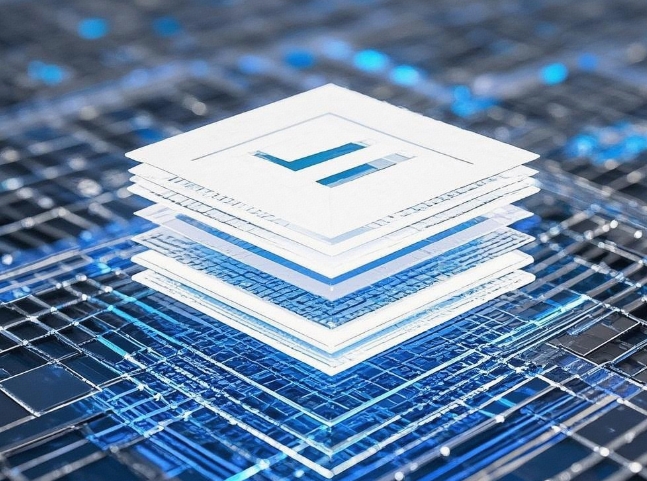Consensus Mechanisms in Blockchain Development: PoW, PoS, DPoS
- latest articles
- 1.DApp Development & Customization: Merging Diverse Market Needs with User Experience 2.Analysis of the Core Technical System in DApp Project Development 3.How to achieve cross-chain interoperability in Web3 projects? 4.How does the tokenization of points reconstruct the e-commerce ecosystem? 5.How to Set and Track Data Metrics for a Points Mall? 6.What is DApp Development? Core Concepts and Technical Analysis 7.Inventory of commonly used Web3 development tools and usage tips 8.Development of a Distribution System Integrated with Social E-commerce 9.Six Key Steps for Businesses to Build a Points Mall System 10.What is DApp Development? A Comprehensive Guide from Concept to Implementation
- Popular Articles
- 1.Future Trends and Technology Predictions for APP Development in 2025 2.Analysis of the DeFi Ecosystem: How Developers Can Participate in Decentralized Finance Innovation 3.From Zero to One: How PI Mall Revolutionizes the Traditional E-commerce Model 4.DAPP Development | Best Practices for Professional Customization and Rapid Launch 5.Recommended by the Web3 developer community: the most noteworthy forums and resources 6.From Cloud Computing to Computing Power Leasing: Building a Flexible and Scalable Computing Resource Platform 7.How to Develop a Successful Douyin Mini Program: Technical Architecture and Best Practices 8.Shared Bike System APP: The Convenient Choice in the Era of Smart Travel 9.How to Create a Successful Dating App: From Needs Analysis to User Experience Design 10.From Design to Development: The Complete Process of Bringing an APP Idea to Life
With the rapid development of blockchain technology, it has gradually become a transformative technology widely applied in fields such as finance, supply chain management, digital copyright, and identity authentication. In blockchain systems, the consensus mechanism, as one of its core components, determines key factors like the security, degree of decentralization, and efficiency of the blockchain network. The three common consensus mechanisms are Proof of Work (POW), Proof of Stake (POS), and Delegated Proof of Stake (DPoS). Each mechanism has its unique advantages and disadvantages, and understanding these mechanisms helps us better comprehend the operational principles and development trends of blockchain.
1. Basic Concepts of Consensus Mechanisms
A Consensus Mechanism refers to the protocol through which various nodes in a blockchain network reach an agreement to validate and confirm the legitimacy of transactions. Since blockchain is decentralized, meaning no single centralized entity controls the entire network, the design of the consensus mechanism is crucial for ensuring the network's security, decentralization, and efficiency.
Consensus mechanisms in blockchain systems typically have two main objectives:
Ensure Data Security: Prevent attacks and tampering by malicious nodes.
Ensure Network Consistency: Ensure all nodes in the network have a consistent understanding of the blockchain data.
In different blockchain projects, the choice of consensus mechanism directly affects the system's performance, degree of decentralization, and network scalability. Next, we will explore in detail the three mainstream consensus mechanisms: POW, POS, and DPoS.
2. POW (Proof of Work)
Proof of Work (POW) is the earliest and most well-known consensus mechanism in blockchain, first implemented in Bitcoin. The core idea of POW is to compete for the right to generate new blocks by solving complex mathematical problems; nodes (miners) that solve these problems receive a certain reward.
2.1 How POW Works
In the POW mechanism, miners need to perform extensive computations to find a hash value that meets specific conditions. This hash value is typically a fixed-length string that must satisfy a certain number of leading zeros. Miners repeatedly test different input data (i.e., the "Nonce") to find a qualifying hash value, a process known as "mining." Once a miner finds a qualifying hash value, they can add the new block to the blockchain.
The security of this mechanism comes from its computational difficulty; the higher the difficulty, the harder it is for an attacker to gain control over the network. To alter the content of a block, an attacker would not only need to recalculate that block's hash but also the hashes of all subsequent blocks, requiring immense computational resources.
2.2 Advantages and Disadvantages of POW
Advantages:
High Security: Due to its high computational difficulty, POW ensures blockchain security. Even with malicious nodes present, attackers cannot easily control the network.
Strong Decentralization: Since POW employs a completely open mining process, anyone can participate without relying on third-party trusted institutions, enhancing the decentralized nature of blockchain.
Disadvantages:
High Energy Consumption: POW requires substantial computational power, leading to extremely high energy consumption. The energy usage of the Bitcoin network has sparked widespread environmental debates.
Low Efficiency: Due to the extensive computations required, transaction confirmation times are relatively long, and throughput is limited, making it unsuitable for high-frequency transactions.
Centralization Trend: Although POW is theoretically decentralized, the need for powerful hardware to handle the computational difficulty has led to large mining pools controlling significant hash power, resulting in centralization.
3. POS (Proof of Stake)
Proof of Stake (POS) is a consensus mechanism different from POW, proposed by Sunny King, the founder of Peercoin. The core idea of POS is that nodes are selected to produce blocks based on the amount of tokens they hold (i.e., their "stake"), rather than relying on computational power.
3.1 How POS Works
In the POS mechanism, block producers are chosen from users who hold a certain amount of tokens. Specifically, after nodes hold a certain quantity of tokens, they can "stake" them by locking the tokens in the network. The more tokens held, the greater the chance of generating a new block. POS's reward mechanism distributes rewards based on the amount of tokens staked, incentivizing users to participate in network maintenance.
3.2 Advantages and Disadvantages of POS
Advantages:
Energy Efficient: Compared to POW, POS does not require massive computational power, significantly reducing the network's energy consumption.
Improved Efficiency: POS networks can generate new blocks more efficiently, reducing block generation time.
Reduced Centralization Tendency: Under POS, the distribution of block production rights is determined by the number of token holders rather than computational power, effectively avoiding risks associated with mining pool centralization.
Disadvantages:
"The Rich Get Richer" Phenomenon: Since users with more tokens have a higher probability of generating blocks, it may lead to wealth concentration.
Security Issues: If certain nodes hold a large number of tokens, they might attempt a 51% attack to destabilize the network.
Difficulty in Initial Stages: In the early stages of a POS network, attracting users to participate in staking can be challenging, resulting in a lower degree of decentralization.
4. DPoS (Delegated Proof of Stake)
Delegated Proof of Stake (DPoS) is an improved consensus mechanism based on POS, which maintains network operations through elected representatives, offering high efficiency and decentralization. DPoS was first proposed by BitShares and has been adopted in several blockchain projects like EOS and TRON.
4.1 How DPoS Works
In the DPoS mechanism, token holders in the network vote to elect a group of "representative" nodes responsible for block generation and network maintenance. Elections are typically conducted through voting by token holders, with more tokens granting greater voting weight. This approach enables DPoS to achieve an efficient and decentralized consensus process.
4.2 Advantages and Disadvantages of DPoS
Advantages:
High Efficiency: By electing representatives for block production and validation, DPoS significantly enhances block generation efficiency and transaction confirmation speed.
Decentralization: Although DPoS involves some centralization of representative nodes, it maintains a high degree of decentralization through regular elections and supervision mechanisms.
Flexibility: DPoS networks can quickly adapt to different application scenarios as needed.
Disadvantages:
Representative Centralization: Although designed to be decentralized, DPoS may lead to a few nodes controlling the network since representative nodes often require substantial token support.
Voting Corruption: Token holders might influence elections by offering incentives to representatives, leading to corruption in the voting process.
5. Comparison of POW, POS, and DPoS
| Feature | POW | POS | DPoS |
|---|---|---|---|
| Security | High (strong resistance to 51% attacks) | Relatively High | Relatively High |
| Energy Consumption | High | Low | Low |
| Efficiency | Low | High | High |
| Decentralization | Strong | Strong | Weaker |
| Attack Difficulty | High | Medium | Lower |
| Representative Nodes | None | None | Yes |
6. Conclusion
POW, POS, and DPoS are the three most common consensus mechanisms in blockchain, each with distinct characteristics and suitable scenarios. POW is widely used in cryptocurrencies like Bitcoin, ensuring high security; POS, by reducing energy consumption and improving efficiency, is chosen for projects like Ethereum; DPoS achieves efficient block production and transaction confirmation through elected representative nodes.
As blockchain technology continues to evolve, the combination and innovation of various consensus mechanisms will further optimize and upgrade blockchain networks. Therefore, understanding these consensus mechanisms not only helps us deeply grasp the operational principles of blockchain but also assists in selecting the most appropriate consensus algorithm for different scenarios.
-

How to achieve cross-chain interoperability in Web3 projects?
With the continuous development of WEB3 technology, Web3 has gradually become an···
-

Inventory of commonly used Web3 development tools and usage tips
With the continuous development of blockchain technology, Web3 has become a hot ···
-

Web3 development trend prediction: analysis of future technology directions and application scenarios
With the gradual development of blockchain technology, the concept of Web3 has m···

 Blockchain
Blockchain












